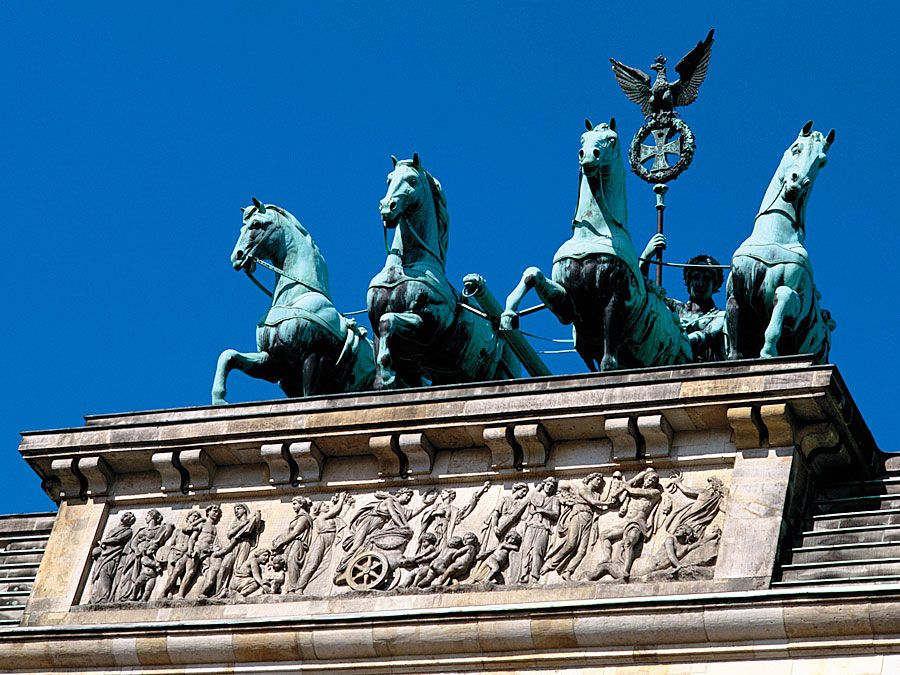Vienna, city and Bundesland (federal state), the capital of Austria. Of the country’s nine states, Vienna is the smallest in area but the largest in population.
Modern Vienna has undergone several historical incarnations. From 1558 to 1918 it was an imperial city—until 1806 the seat of the Holy Roman Empire and then the capital of the Austro-Hungarian Empire. In 1918 it became the capital of the truncated, landlocked central European country that emerged from World War I as a republic. From 1938 to 1945 Austria was a part of Adolf Hitler’s “Greater” Germany, and Vienna became “Greater” Vienna, reflecting the Nazi revision of the city limits. In the decade following World War II, Austria was occupied by British, French, American, and Soviet forces, and Vienna was divided into five zones, including an international zone, covering the Innere Stadt (“Inner City”). In 1955 the State Treaty, by which the country regained independence, was signed with the four occupying powers, and Vienna became once again the capital of a sovereign Austria.
Observe Vienna’s Schloss Schönbrunn, Gothic St. Stephen’s Cathedral, and postmodern Haas Haus buildingOnce the seat of the Austro-Hungarian Empire, Vienna is filled with majestic sights, both old and new.
See all videos for this article
Vienna is among the least spoiled of the great old western European capitals. Its central core, the Innere Stadt, is easily manageable by foot and public transportation. In a city renowned for its architecture, many of Vienna’s urban prospects remain basically those devised over several centuries by imperial gardeners and architects. The skyline is still dominated by the spire of St. Stephen’s Cathedral and by the giant Ferris wheel in the city’s chief park, the Prater. The city suffered heavy damage in the last months of World War II, and much rebuilding was done after the war. Nevertheless, the character of Vienna as a whole remains much the same as in the years before 1914.
Viennese Lebenskunst (“art of living”) has survived changing rulers and times. It is still possible to live in Vienna at almost the same pace and in much the same style as it was a century ago. The same music is played in the same rebuilt concert halls, and a theatrical or operatic success still stimulates lively conversation. One can drink the same sourish local wines in the taverns on the outskirts of town, consume the same mountains of whipped cream at Sacher’s and Demel’s, and sample the same infinite varieties of coffee in countless cafés. Thick woolen suits and overcoats in shades of green, gray, or brown loden cloth and colourful dirndl dresses may still be seen. It is even possible for tourists, and for others on festive occasions, to ride in a traditional fiacre, the two-horse carriage driven by a bowler-hatted coachman.
Tour Vienna’s Rococo, Gothic, and postmodern buildings and learn about the city’s imperial pastAn introduction to Vienna, Austria.
See all videos for this article

Britannica Quiz
European Capitals Quiz
Austria’s capital has avoided many of the problems—financial crises, social unrest, urban decay—that afflict other European cities. Its people enjoy an enlightened health and welfare system, which originated in the reforms of Empress Maria Theresa and Emperor Joseph II in the 18th century. A city of green parks with ponds, cafés, and playing bands; opulent stores and elegant shopping streets; banks, bookshops, and crowded theatres; and boulevards for leisurely sauntering—Vienna is an invigorating distillation of human energy and imagination. Area city, 160 square miles (415 square km); metropolitan area, 1,491 square miles (3,862 square km). Pop. (2011) city, 1,714,227; (2017 est.) city, 1,867,582; urban agglom., 2,157,434.
